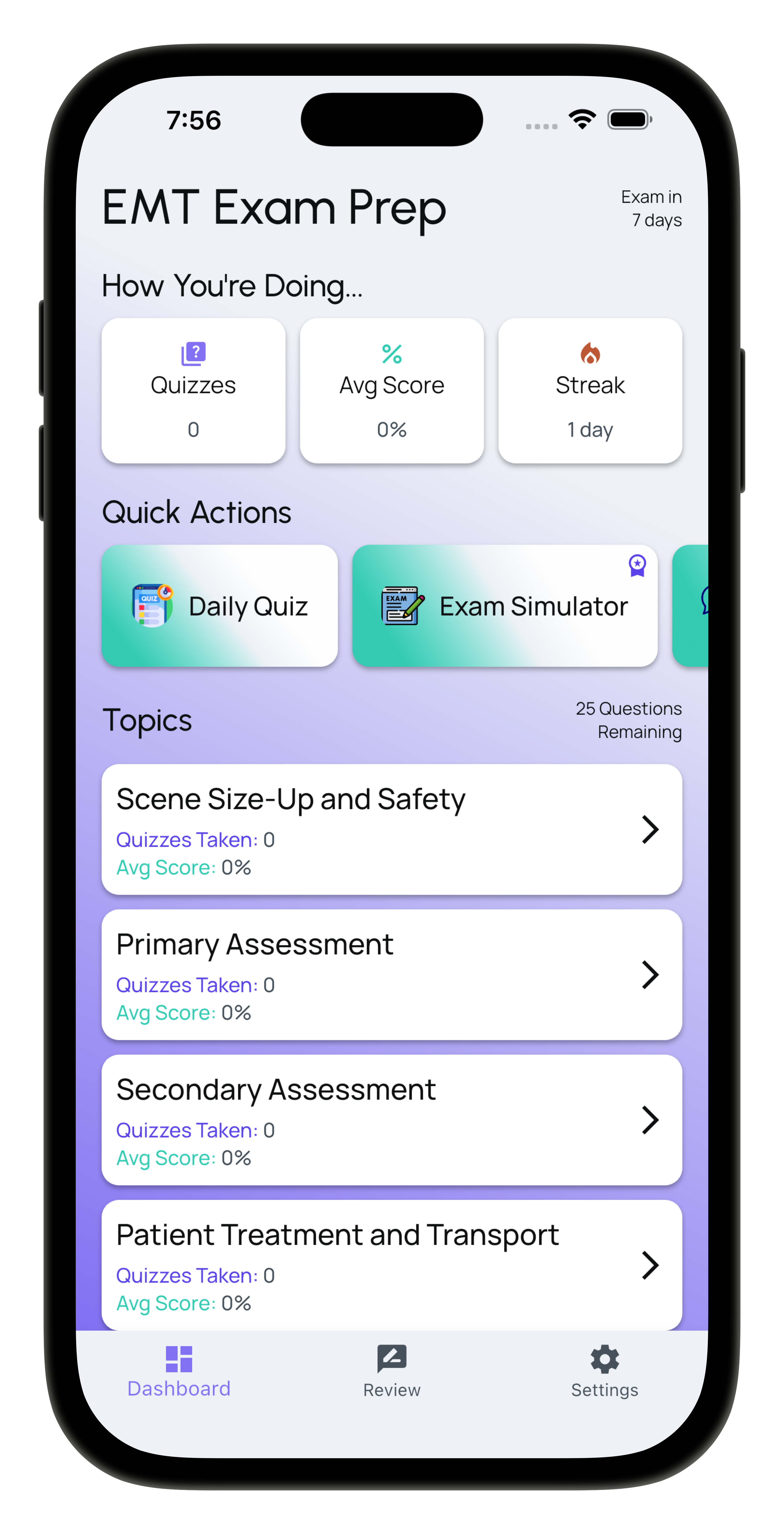EMT Exam Prep 2025
In the fast-paced world of emergency medical services (EMS), the ability to conduct effective patient assessments is not just a skill—it’s a lifeline. For EMT candidates and emergency responders, mastering patient assessment techniques is crucial for identifying life-threatening conditions, determining appropriate interventions, and ensuring patient safety. This blog post will delve into the fundamentals of patient assessment in emergency situations, providing actionable tips and insights to enhance your skills and improve your chances of success on the NREMT certification exam.
The Importance of Patient Assessment
Patient assessment is a systematic process that involves gathering information about a patient’s condition, medical history, and needs. In emergency situations, this process is vital for several reasons:
-
Rapid Identification of Threats: Quickly assessing a patient’s vital signs and presenting symptoms allows EMTs to identify life-threatening conditions that require immediate intervention.
-
Informed Decision-Making: A thorough assessment informs treatment decisions, ensuring that appropriate care is delivered based on the patient’s specific needs.
-
Communication with Healthcare Teams: Proper assessment documentation facilitates effective communication with other healthcare professionals, enhancing the continuum of care.
Components of Patient Assessment
To conduct a comprehensive patient assessment, EMTs should follow a structured approach known as the “ABCDE” method: Airway, Breathing, Circulation, Disability, and Exposure. Each component serves a critical role in evaluating the patient’s condition.
Airway
- Assessment: Check if the airway is open and unobstructed. Look for signs of airway compromise, such as stridor or abnormal respiratory patterns.
- Intervention: If the airway is compromised, employ maneuvers such as the head-tilt-chin-lift or jaw-thrust to secure it. Consider adjuncts like oropharyngeal or nasopharyngeal airways as needed.
Breathing
- Assessment: Evaluate the patient’s respiratory rate, quality, and effort. Look for signs of respiratory distress, such as cyanosis or use of accessory muscles.
- Intervention: Administer supplemental oxygen if indicated and, if necessary, assist with ventilations using a bag-valve-mask (BVM) device.
Circulation
- Assessment: Check pulse quality, skin color, temperature, and capillary refill time. Assess for signs of shock, such as hypotension or altered mental status.
- Intervention: Control any active bleeding, establish IV access, and provide fluid resuscitation as guided by protocols.
Disability
- Assessment: Quickly assess the patient’s level of consciousness using the AVPU scale (Alert, Verbal, Pain, Unresponsive) and check pupil size and reaction.
- Intervention: If the patient is unresponsive or demonstrates altered mental status, provide vital support, and prepare for transport to a definitive care facility.
Exposure
- Assessment: Fully expose the patient to identify any hidden injuries while taking care to maintain their dignity and warmth.
- Intervention: Once injuries are identified, take appropriate action, such as splinting fractures or applying dressings to wounds.
Practical Tips for Effective Patient Assessment
-
Practice Active Listening: Effective communication with patients is essential. Listen carefully to their descriptions of symptoms and concerns, which can provide valuable clues to their condition.
-
Use the Environment: In emergency situations, utilize your surroundings to gather information. Observing bystanders or the scene can help you piece together the patient’s history and mechanism of injury.
-
Stay Calm and Focused: High-pressure situations can be overwhelming. Develop strategies to manage stress, such as deep breathing exercises, and maintain focus on the assessment.
-
Frequent Practice: Engage in scenario-based training to hone your assessment skills. Utilize the EMT Exam Prep mobile app to access NREMT-style practice questions that cover assessment scenarios, enhancing your preparedness for the exam.
Conclusion: Elevating Your Patient Assessment Skills for Certification Success
Mastering patient assessment is an essential skill that not only enhances your effectiveness as an EMT but also plays a pivotal role in achieving certification success. By following the ABCDE method and practicing your assessment skills, you will be well-equipped to handle emergency situations with confidence and competence.
As you prepare for your NREMT certification exam, remember that the EMT Exam Prep mobile app is an invaluable resource, offering practice questions and detailed explanations to reinforce your knowledge. With dedication and the right tools, you can excel in your patient assessment skills, ensuring that you are prepared to deliver exceptional care in the field.
Ready to become a certified EMT? Try EMT Exam Prep 2025 for comprehensive NREMT-style practice questions with detailed explanations covering all essential certification content areas.
